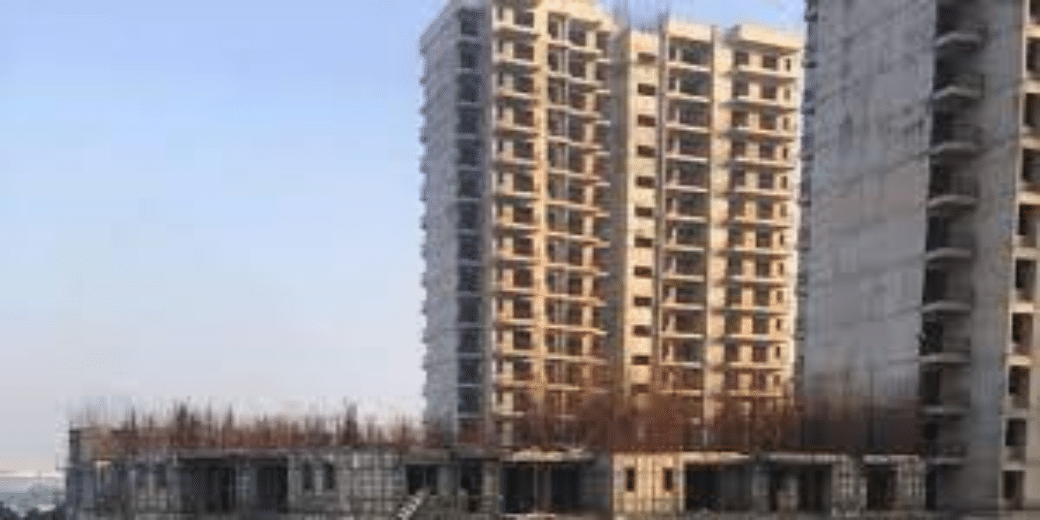From Trends to Projections: Unveiling the Dynamics of India's Home Buying Market
Consumer preferences and behaviors have transformed due to a multitude of factors, including economic circumstances, advancements in technology, and shifting lifestyles

The Indian real estate market has witnessed dynamic shifts in recent years, with 2023 bringing forth new trends in homebuying. More and more people are now actively pursuing their dreams of owning a home. Consumer preferences and behaviors have transformed due to a multitude of factors, including economic circumstances, advancements in technology, and shifting lifestyles. Over the past three years, there has been a gradual change in India, where individuals are moving away from renting homes and instead opting to buy their own properties.
In fact, according to leading international property consultancy, CBRE India, nearly 45 per cent of Indian respondents intend to shift into their own home in the next two years. A majority of them, including millennials, plan to purchase residential properties rather than renting them.
The Role of RBI
Over the past year, the RBI has played a crucial role in shaping the home-buying landscape in India. Monetary policies and interest rate movements have been instrumental in influencing consumer decisions. The central bank’s measures to manage inflation, control liquidity, and foster economic growth have had direct implications on the real estate sector.
Interest Rates and Affordability
One of the most significant factors impacting home buying trends is the fluctuation in interest rates. The RBI has implemented measures to control inflation and stimulate economic growth, leading to adjustments in lending rates. In the past year, interest rates have been lowered, making home loans more affordable for potential buyers.
Lower interest rates translate into reduced monthly mortgage payments, attracting a larger pool of homebuyers. This has driven the increased demand for residential properties in various segments, from affordable housing to premium developments. As interest rates continue to play a pivotal role, consumers are becoming more financially savvy, closely monitoring RBI announcements for potential shifts in the lending landscape.
Earlier this year in June, the real estate sector welcomed the Reserve Bank of India’s decision to keep the repo rate unchanged at 6.5%, providing a big relief to homebuyers.
Government Initiatives and Regulatory Support
In tandem with the RBI’s efforts, the Indian government has introduced several initiatives to boost the real estate sector. The ‘Housing for All’ mission, affordable housing projects, and tax incentives for homebuyers have further stimulated the market. The RBI’s collaboration with the government in crafting policies that support home ownership has fostered a positive environment for potential buyers.
Evolving consumer investment preferences
India’s housing market has witnessed record-breaking sales in 2023, defying conventional expectations. Despite increased asking prices and the highest interest rates in six years, homebuyers have actively pursued deals.
Market experts are confident that such demand will not only persist in 2024 but is expected to grow, albeit at a slower pace. This optimism is attributed to high economic growth and the anticipation of a decrease in home loan interest rates. Real estate industry data indicates unprecedented sales in terms of both volume and value, signaling a trend where consumers are increasingly inclined towards home ownership in the post-COVID pandemic era.
There has been a noticeable increase in investors opting for home ownership in the Indian real estate market as a means of security. This shift can be attributed to several reasons that contribute to them transitioning from renting homes to becoming homeowners:
Macroeconomic factors: The overall economic conditions in India play a significant role in influencing people’s preference for buying homes. Currently, with job security increasing and loan rates remaining steady, many individuals perceive real estate as a reliable investment option. Investors will have numerous opportunities for investment in the coming year, thanks to the rapid growth and robust Indian economy. The growing middle class in the country, seeking improved lifestyles, is driving the demand for a variety of housing options. It is expected that the country will conclude the year 2023-2024 with strong growth and stability at the microeconomic level.
Rise of Tier II and Tier III Cities: The emergence of well-planned cities and solid infrastructural developments, alongwith increased focus on government initiatives such as Smart Cities and PMAY programmes have led to Tier II and III cities becoming attractive to homebuyers. While strong demand for investments in Tier 1 cities continue, Tier II and III cities are likely to experience rapid economic movement and business activity, which will ultimately lead to higher demand and supply.
Looking ahead: Homebuying in 2024
After observing a significant increase in housing registrations in 2023, there is an opportunity for 2024 to not only maintain this progress but potentially exceed it. However, achieving this will necessitate ongoing collaboration among industry participants, with developers shouldering the responsibility of meeting the needs of homebuyers.
In 2024, it is estimated that the growth will be driven by environmentally friendly housing and sustainable homes, which will undoubtedly transform the landscape of the industry over the next ten years.
The author is CEO and CO-Founder, Basic Home loan. Views are personal.